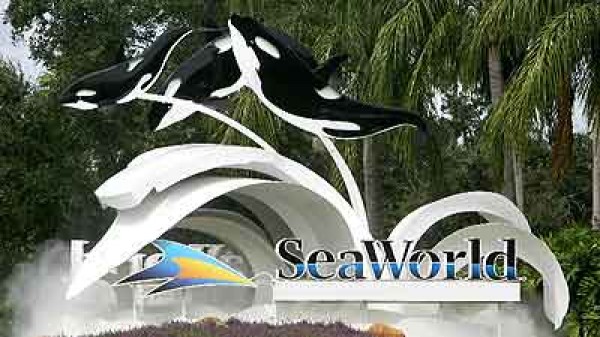SeaWorld to acquire Dutch killer whale

SeaWorld Parks & Entertainment is attempting to acquire a young female killer whale rescued off the coast of the Netherlands last year.
The killer whale, nicknamed “Morgan,” was captured in June 2010 after a ship spotted her swimming alone and starving in the Wadden Sea. She has been living since in a Dutch marine park known as Dolfinarium, where, with SeaWorld’s assistance, she has been nursed back to health.
SeaWorld is now seeking to have Morgan transferred to Loro Parque, a marine park in the Canary Islands that has five other SeaWorld-owned killer whales on display. Dolfinarium this month applied for a government transfer permit.
Orlando-based SeaWorld Parks said Tuesday that it has no plans to bring Morgan to the U.S., where the company operates SeaWorld marine parks in Orlando, San Diego and San Antonio.
“The plan is for her to join the group at Loro Parque and stay there long-term,” SeaWorld spokesman Fred Jacobs said.
SeaWorld would not say whether it will pay any compensation — in the form of money or other animals — to Dolfinarium in exchange for Morgan. The company said it has worked with the smaller Dutch park for many years, sharing animals and expertise, and that “assisting Dolfinarium with Morgan’s rehabilitation and helping them find a long-term home for her should be viewed in the context of our long-term partnership with them.”
Morgan, estimated to be about 2 years old, would become the 25th killer whale in SeaWorld’s corporate collection. There are only about 42 killer whales in captivity around the world, according to a database maintained by orca activists.
Officials involved with Morgan’s rescue initially said they intended to return the animal to the wild once she had been rehabilitated. The animal — the first killer whale found alive in Dutch coastal waters in more than 60 years — was emaciated and defecating algae when she was rescued, but she has since recovered to a normal weight.
Analyses of her DNA and vocal repertoire suggest she is most likely related to a subpopulation of killer whales near Norway, though there is also a possibility that she comes from an Icelandic population.
But the Dutch government ruled late last year that she should not be released. The decision followed a report prepared by seven killer-whale experts who recommended Morgan remain in captivity in part because her natal pod has not been identified and because releasing her in the most likely location of her pod would require a hazardous operation conducted offshore and in the winter.
One of the authors of the report was a former vice president of corporate veterinary services for SeaWorld Parks & Entertainment who still does work for the company as a consultant.
A consortium of anti-captivity activists, who have organized a group in the Netherlands dubbed “Free Morgan,” are lobbying to have Morgan set free. The group says the animal could be successfully reintroduced into the wild through the use of an open sea pen, most likely in Norwegian waters, and through the use of DNA testing to find her native pod.
Activists accuse SeaWorld and the marine park’s allies of ignoring the animal’s best interests to add more genetic diversity to the company’s killer-whale-breeding program. Successfully breeding killer whales is critically important to SeaWorld because negative publicity makes capturing healthy ones from the wild all but impossible.
“If she remains at Loro Parque, she’s going to be pregnant by the age of 8 or 9,” said Colleen Gorman, an advocate with a Florida-based group called the Orca Project.
SeaWorld’s Jacobs said the company’s motivation is “strictly the welfare of this animal,” and that its goal with every rescue effort is to return the animal to the wild.
“We’ve had a lot of success with that over the years, including returning rehabilitated marine mammals to the wild, but sometimes it is clear that the only humane option for a rehabilitated marine mammal is to spend its life in a zoological institution,” Jacobs said. “We certainly view that process as positive for Morgan, but it is also positive for everyone who gets to see Morgan and learn about killer whales generally and her specifically.”
Shortlink:
